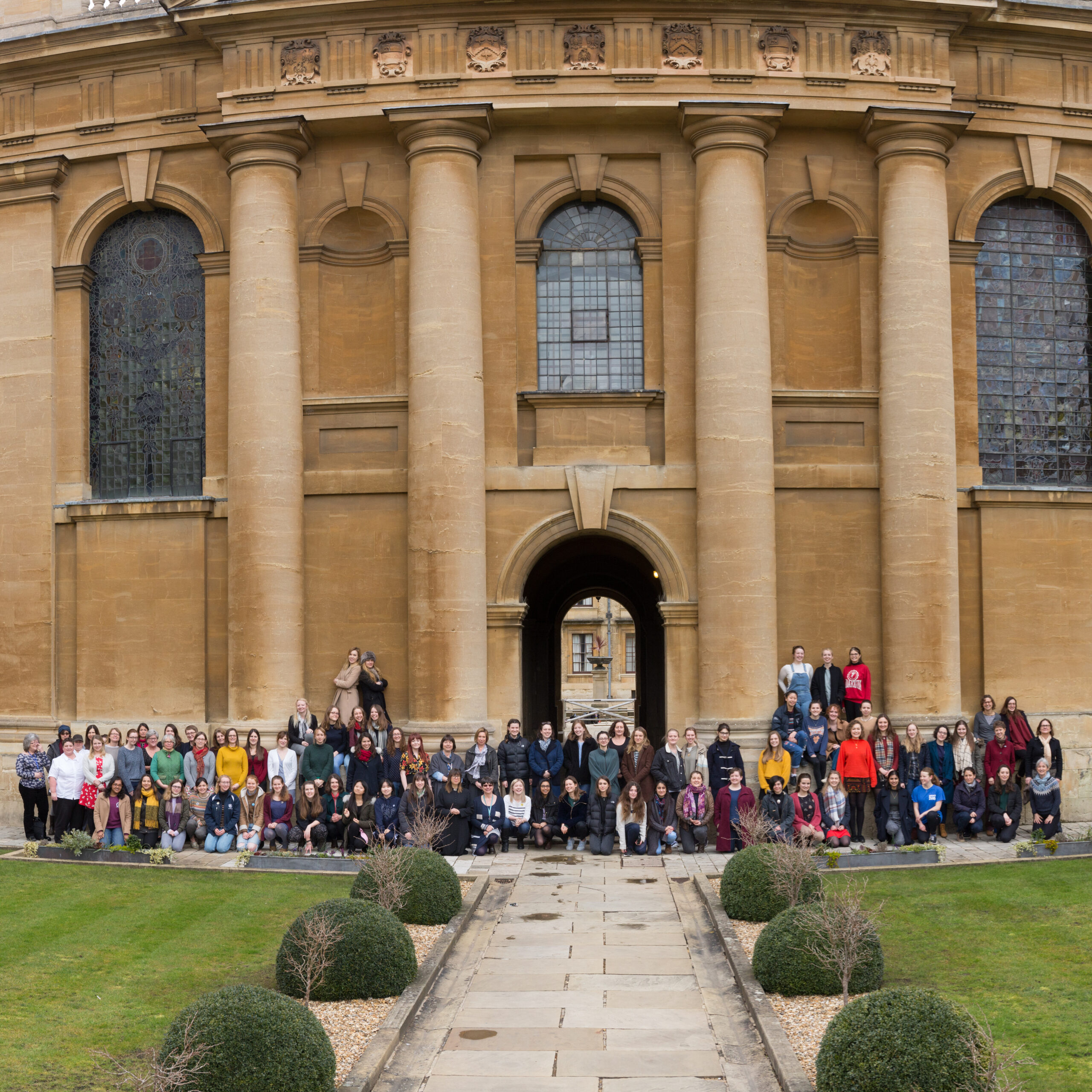Women at Queen’s 1979 – 2019 by Kenneth O Morgan.
The 1970s were a time of growing women’s liberation, an era of feminism and greater equality. By the of the decade it influenced almost all aspects of our society – there was even a woman prime minister. Even the private, wholly male world of Oxford colleges felt its impact. In 1974 five men’s colleges, Brasenose, Jesus, Wadham, Hertford, and St. Catherine’s admitted a sprinkling of women while the previous year Balliol appointed its first female Fellow and tutor. This was the background to my putting forward in 1978 a motion that Queen’s should follow suit. It seemed to me strange, indeed unfair, that half the human race should be excluded from the huge academic and other advantages of being undergraduates at my College. Several other Fellows felt that we should follow the lead of a growing number of colleges, partly on liberal grounds, partly so that we should not appear to be the last. My PPE colleague, and good friend, Jon Cohen and I had a long private conversation at which we decided to go ahead as soon as possible and test College opinion with a motion at the Governing Body. For myself, it seemed to me bizarre that Queen’s should be solely male. The number of single-sex institutions of higher education in the British Isles was minute; many had halls of residence in which male and female students were co-resident. I myself had spent eight years at the University of Swansea before coming to Queen’s and the separation of the sexes, like some Muslim madrassa, felt very odd to me. Of course, we all taught for other, female colleges, often with male and female undergraduates in the group together, and no disasters occurred.
Jon and I felt it was highly likely that we would win the vote. The Fellows of Queen’s were a liberal and tolerant group (the Great Reaper had played a useful part in that respect). There were some murmurings about the possible impact on the College rugby team, but I reassured them that in South Wales women also played rugby (there is, I believe, a women’s rugby team now) while other features of the College could benefit, such as College dramatics. I did some canvassing myself, using such skills as I had acquired in general elections on the Blackbird Leys estate working for the Labour Party with my dear Modern History colleague, Alastair Parker (a strong feminist sympathizer). I was told that the votes would be conveyed orally at the Governing Body meeting in order of seniority – that is to say seniority of appointment not of age. That meant that the five professorial Fellows, mostly quite old, would declare their vote first. I therefore talked at some length to each of them and found all to be totally supportive, not least because they all had daughters and/or grand-daughters. So there were five votes in the bag (three more with Jon, Alastair, and me) before we began.
Jon and I had agreed that one of us would launch the debate, and as it happened I spoke first. I made some orthodox comments on the barriers between men and women diminishing in Oxford as everywhere else, and that the criterion in Queen’s was, and should only be, the abilities and scholarly potential of candidates at the entrance examinations each December, irrespective of class, nationality, or gender. One colleague, John Moffatt, a future Provost, had told me he would vote with me if I declared unambiguously that it would be a permanent change, so I made sure I satisfied him on that point. The discussion was calm, good-tempered, and pretty one-sided (one possible dissentient was absent). The only opponent of note was, very surprisingly the Provost, Lord Blake, a close personal friend, who observed that there could be no going back from so fundamental a change. I later told him that he had used much the same arguments as Sir Robert Peel in opposing the Reform Act of 1832, to which he responded with his usual charm and good humour. (I wrote his obituary in the Oxford DNB later and his three daughters told me they all ticked him off afterwards because they all wanted to go to Queen’s!) In turn, the Fellows voiced their views, led by the five professors, and it was easily carried by 26 votes to four, if I recall. We needed a two thirds majority and that was easily achieved. I was enormously pleased and excited. There were only two fundamental changes that a college statute could manage in an Oxford college: it could be abolished as no longer fulfilling its avowed purposes or it could be made, in the US term, co-ed. We chose the latter.
I recall no subsequent dispute or difficulty at all. It seemed to me that Queen’s benefitted from having the whole of humanity within its walls, both in the quality of its undergraduates and the atmosphere around the College. The Domestic Bursar made such practical domestic arrangements as were needed without fuss. I left Queen’s to become a Vice-Chancellor in 1989 and later moved to the House of Lords (which first admitted women peers in 1958 and now numbers close to 200 baronesses). It is excellent that Queen’s is celebrating this important reform, that it is doing so when it has its first woman Provost, and when the centenary of women gaining the franchise is also being acclaimed. I am proud that my own beloved College helped to lead the way and that I played some part in making it happen.
Lord Morgan was Fellow and Praelector in Modern History and Politics at Queen’s 1966 – 89, and has been an Honorary Fellow since 1992.
